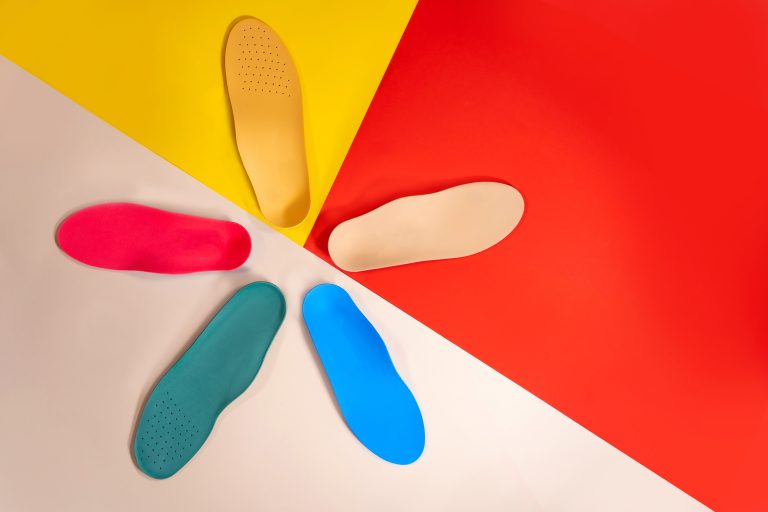The production of foot orthoses has advanced significantly in recent years as a result of new technology utilized in the orthopedics industry. Patients can now have completely customized orthoses that are perfectly fitted to the contour of their foot, which is much more advanced than traditional corrective insoles. It is, therefore in the interest of all foot care professionals to prescribe these high-quality supports in order to respond to the plantar pathologies of these same patients for a successful treatment. Here are the main factors to consider while choosing the best kind of orthoses.
Should I choose custom or prefabricated orthoses?
These two varieties of orthoses differ in a number of ways.
Custom orthoses refer to a model that is prescribed by a professional and for which the attending podiatrist must take exact measurements beforehand, in order for the mold to be exactly matched to the shape of the foot. The models created by 3D printing, the most recent evolution of personalized orthoses, are even more exact and effective thanks to the very accurate digitization of the foot.
On the other hand, the prefabricated version is sold over the counter and generally has uniform shapes to accommodate the largest number of people.
Consequently, a personalized orthosis will take more time to create than a prefabricated one, but it will be considerably more efficient at correcting pathologies, particularly biomechanical issues. The other will serve more as a simple foot support.
Which conditions can 3D custom orthoses treat
The 3D foot orthoses perform extensive corrective work in addition to supporting the foot’s arch since their 100% customized design allows them to pinpoint the precise issue(s) and help overcome it. As a result, pathologies like hallux valgus, plantar fasciitis, heel spur, flat or cavus feet, hammertoes, and others, are well-suited to be treated by these orthoses.
The 3D orthoses work in two ways to help the foot operate normally and decrease pain by restoring the balance of its biomechanics. In fact, it also positively influences the posture of the entire body, especially the lower limbs and the lower back.
Are the orthoses made to exact measurements?
EThe benefit of this scan is that it captures the foot with exceptionally accurate biometric data and does it to a millimeter’s worth of precision. As a result, the podiatrist can see the entire foot, including the problematic areas. The 3D printing technology will then be utilized to produce highly customized orthoses from the same data.
Once the digital mold is acquired, the expert can alter it as many times as necessary if they believe the adjustment has to be changed.
Precision, cutting-edge technology, quality of materials used: learn more about the advantages of Talaria’s 3D orthoses printing process.
Do your shoes accommodate the orthoses?
It is a good idea to wear an orthosis that is completely customized to your feet, but you should also remember to select the right shoes because they are crucial to the treatment of plantar pathology. Even if you give your patient the best orthoses in the world, they will not be as successful as they could be if they are not adjusted for their footwear. This is a crucial element to take into account when creating the orthoses so that the patient is at ease doing daily activities and the orthoses function as intended.
3D foot orthoses: the optimal treatment for your patients
The high precision, comfort and quality of the orthoses created through 3D printing make them the best possible solution for treating plantar pathologies that require this type of support, especially when it comes to deformity or biomechanical imbalance. It is an investment that has as many advantages for the patient as for the podiatrist.
Learn more about Talaria 3D orthoses by getting in touch with our team.
